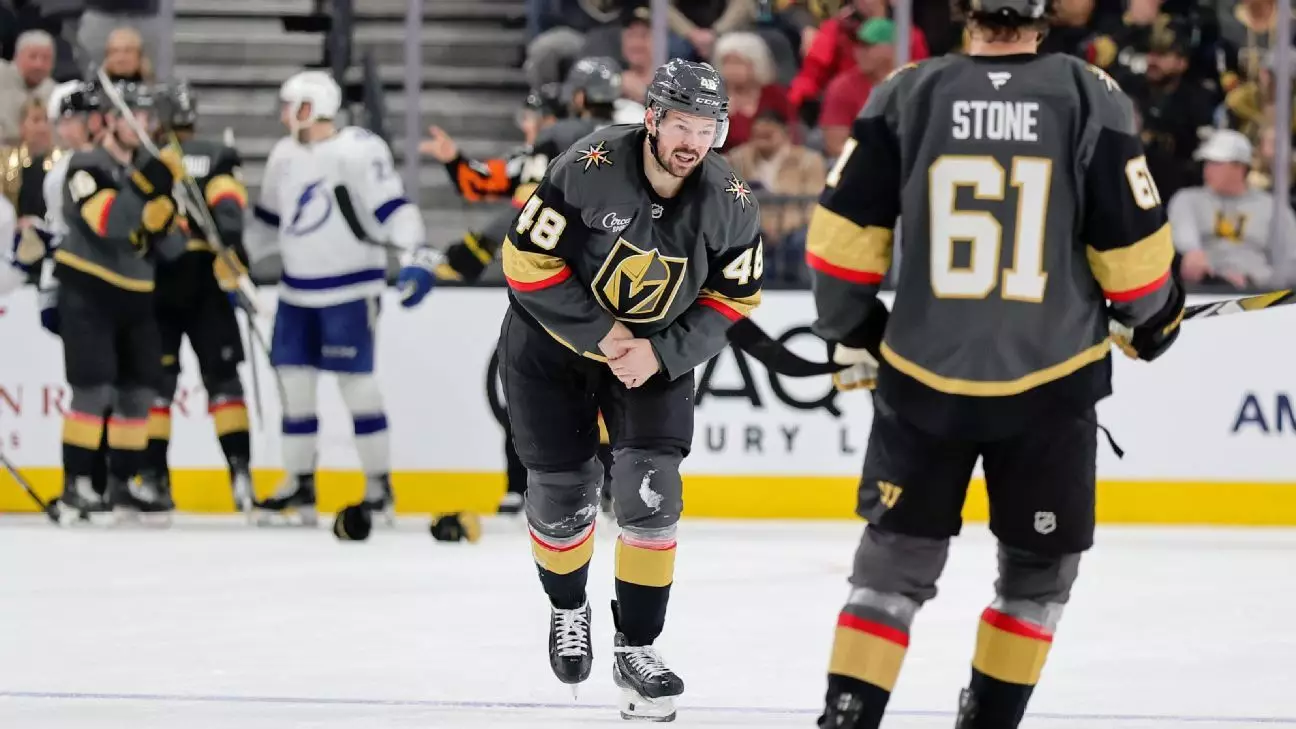The emotional rollercoaster of professional sports is palpable, especially when a key player like Tomas Hertl experiences an injury. His absence from the Vegas Golden Knights lineup for two weeks loomed large, demonstrating how pivotal individual contributions can be to team performance. The unfortunate incident happened during a heated match against the Tampa Bay Lightning, when he was aggressively slammed into the boards by defenseman Emil Lilleberg. Such moments, while part of the game, can turn the tide for any team—highlighting the fragility of athlete health and the unpredictable nature of the sport.
Hertl’s return couldn’t come at a more critical juncture for the Golden Knights, as they struggled without their leading scorer. At the time of his injury, Hertl had notched an impressive 31 goals. Since then, teammate Pavel Dorofeyev has taken the lead with 33 goals, a testament to the competitive atmosphere within the team. However, it’s not just the numbers; it’s the synergy that matters. Hertl’s unique playing style contributes specifically to the team’s tactical execution, especially during power plays.
The Power Play Dilemma
The statistics reveal a stark reality for the Golden Knights—their power play effectiveness latterly took a nosedive. Having the league’s best power play before Hertl’s injury, converting over 30% of their attempts, they now find themselves in a theoretical quagmire, failing to score on their last 10 man-advantage opportunities spanning five games. Coach Bruce Cassidy openly acknowledged the void left by Hertl, emphasizing the absence of his “interior presence” during these crucial moments. A power play is not merely about numbers but rather the momentum and psychological advantage it provides. Hertl’s record of 14 power-play goals last season underscores how vital he is to restoring that edge.
The significance of returning players is not only about individual prowess but also about rekindling the dynamics within established lines. Hertl had forged a notable chemistry with Dorofeyev and Brandon Saad; their collaboration had previously shown great promise. The prospect of this line reacquainting itself is not just hopeful speculation; it’s a critical necessity if the Golden Knights aspire to rise in the standings.
Challenges Ahead Without Key Players
Despite Hertl’s return, the Golden Knights are still grappling with absences in their squad. Jack Eichel and defenseman Alex Pietrangelo remained sidelined due to upper-body injuries, which means the team still lacks some of its core leadership and firepower. This absence can lead to a ripple effect throughout the lineup, challenging Cassidy to adapt his strategies and rotations. It’s an ever-present chess game in the NHL, where injuries and player returns create both opportunities and obstacles.
As Nicolas Hague re-emerged from his brief illness, the importance of player health became even more evident. Illness can disproportionately impact teams, especially in the tight-knit environment of professional sports, further emphasizing the fragility of having a fully fit squad.
Therefore, as the Golden Knights look forward to the future, players like Hertl will need to step up and show their worth on both ends of the ice, while the management must navigate through the intricate web of injuries, chemistry, and momentum to steer this talented team toward success.

